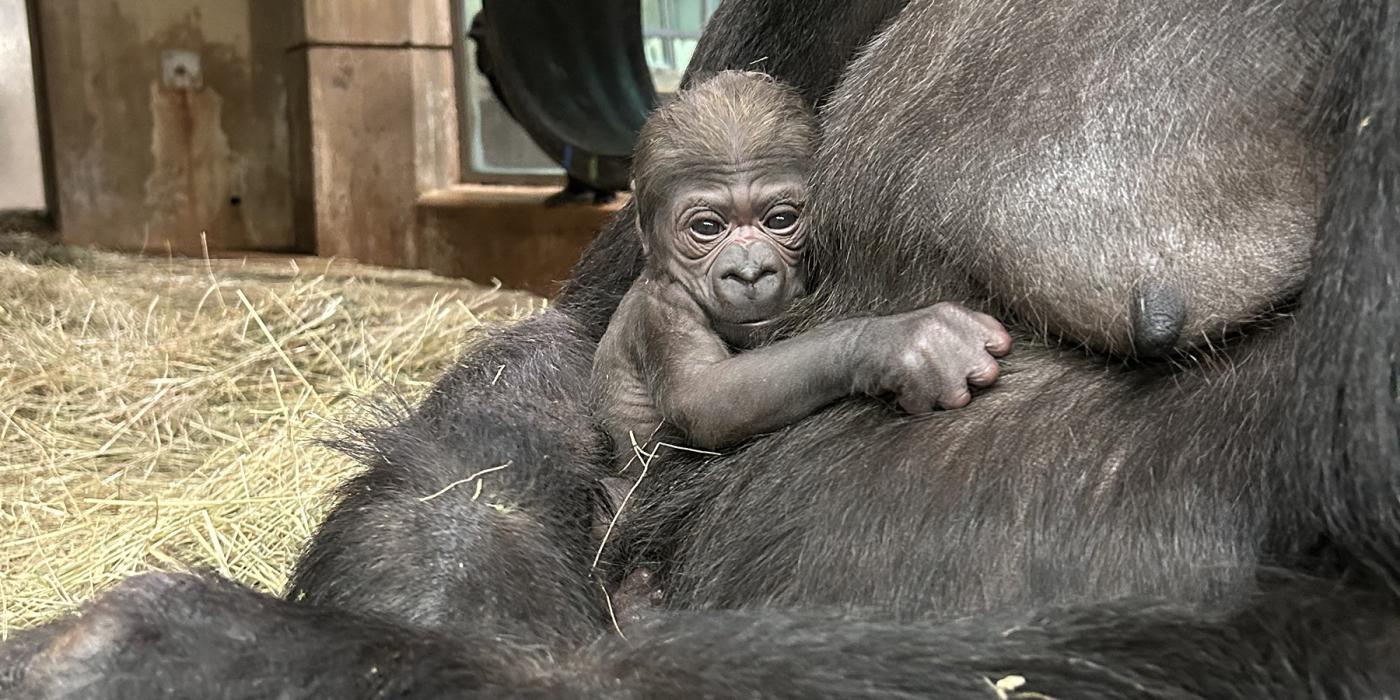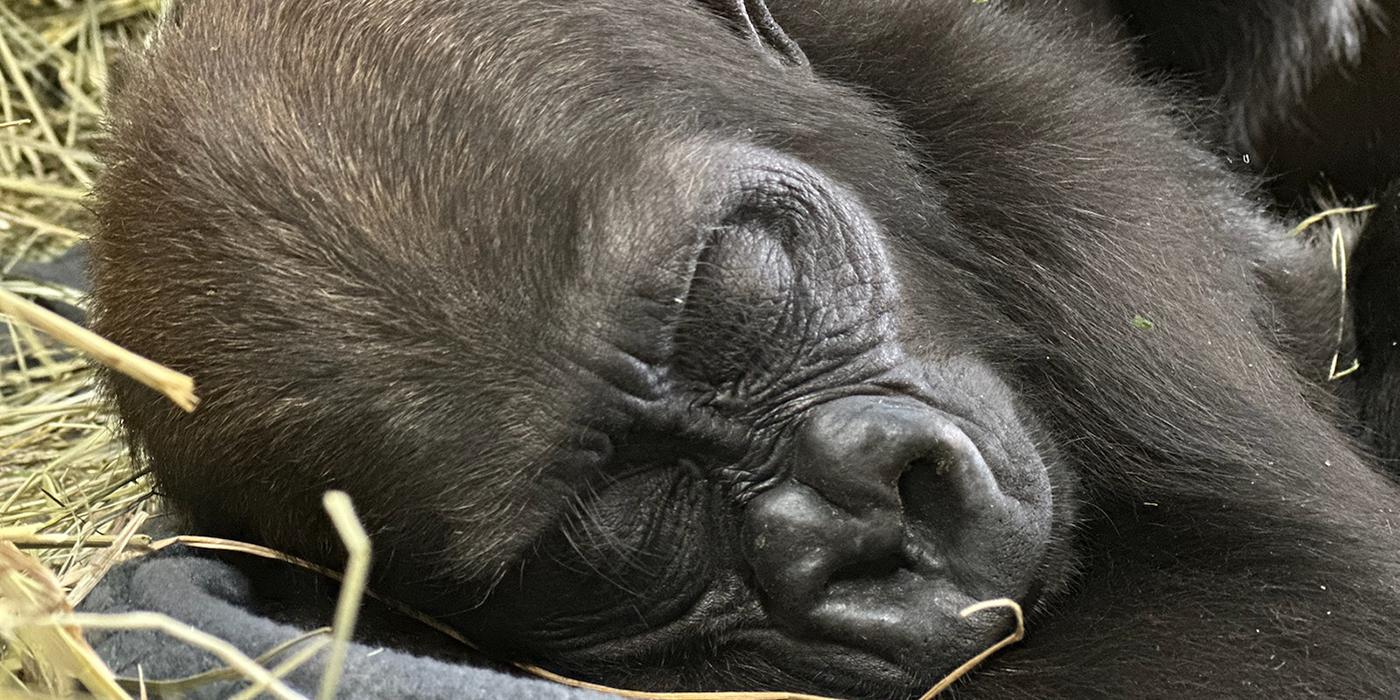#GorillaStory: Mischievous Moke
Every year on Sept. 24, we celebrate World Gorilla Day by teaching visitors about our ambassador apes and sharing ways to help their wild counterparts. One of our most charismatic and rambunctious residents is Moke, the youngest member of our western lowland gorilla troop. He spends much of his time playing pranks on his exhibit-mates, mastering new training behaviors and coming up with clever ways to get keepers’ attention.
Moke may only be four years old, but he walks around with the confidence of a silverback. He is all swagger with a good dose of juvenile goofiness. Even though he acts big and tough, every so often he will run to his mother, Calaya, for some comfort and a snuggle. Then, it’s right back to causing havoc among the troop!
These days, Moke tips the scale at 100 pounds—just 20 pounds shy of his groupmate, Kibibi, who is 13 years old. She remains Moke’s best buddy, and the two of them have tons of fun play-wrestling and partaking in games of chase.
It is now a favorite activity of Moke’s to chase his father, Baraka, around the habitat. Sometimes, he will even throw enrichment at dad when he is not looking! Baraka is an extremely patient father and lets Moke get away with most of his antics without even batting an eye. Every now and then, though, Baraka will turn the tables and chase Moke, too.
From a young age, Moke has participated in our positive reinforcement training program. Like our 6-year-old Bornean orangutan, Redd, Moke is an all-star student. He will voluntarily present his arm to receive injections—including his annual flu shot—and is rewarded with some banana and lots of praise from his keepers. He takes the needle sticks in stride; they never seem to bother him.
Gorillas can be susceptible to heart disease, so we monitor their health from a young age. Moke has been trained to approach the mesh and present his chest to us. He will sit still as we hold a fetal doppler against his chest. This allows us to obtain regular heart rate readings on him. This training is coming along nicely! We have not performed any awake cardiac ultrasounds on Moke yet, but we have built a good foundation for this training. When the time comes for us to introduce the cardiac ultrasound machine and probe, he should acclimate to the new equipment quickly.
We got some good news earlier this spring when he underwent a routine wellness exam and received a clean bill of health from our veterinary team!
This year, Moke was trained to sit (or “station”) in front of a blue frisbee for his evening meal. Originally, Calaya and Moke shared a feeding station. As he grew, however, we noticed he was taking too much of mom’s food for himself! Now that each of our gorillas has his or her own station, everyone can eat in peace and dominant individuals are dissuaded from stealing the other troop members’ food.
Moke often plays pranks on his keepers, chasing us as we pass by his enclosure or banging on the glass to get our attention. Behind the scenes, he will even throw hay, sticks and leaves at us as we walk by! It has been very exciting watching Moke grow into the juvenile that he has become, and we are all excited to see how he continues to show us glimpses into his developing personality.
I want to help gorillas! What can I do?
You can help gorillas like Moke and his troop this World Gorilla Day, or any other day of the year, by making environmentally conscious decisions like recycling, conserving energy and making sustainable consumer purchases.
One of the metals inside electronic devices that can be recycled is called tantalum, and it is mined from areas in the Democratic Republic of the Congo where gorillas live. Tantalum is extracted from the ore Columbite-tantalite (commonly known as coltan). It is heat-resistant and can hold a high electrical charge.
Coltan excavation has resulted in gorilla habitat destruction, and many of the apes fall victim to poachers because of this practice. One way we can help protect these natural resources is by recycling our old electronics, including cell phones, computers, tablets, cameras, gaming consoles, hearing aids and GPS navigation systems.
It may sound like a small action, but recycling electronics can greatly help reduce the need for more expansive coltan mining. Every small action has the potential to make a huge difference, so it’s never too late to get started with your at-home conservation efforts!
This story appears in the October 2022 issue of National Zoo News.
Related Species:




